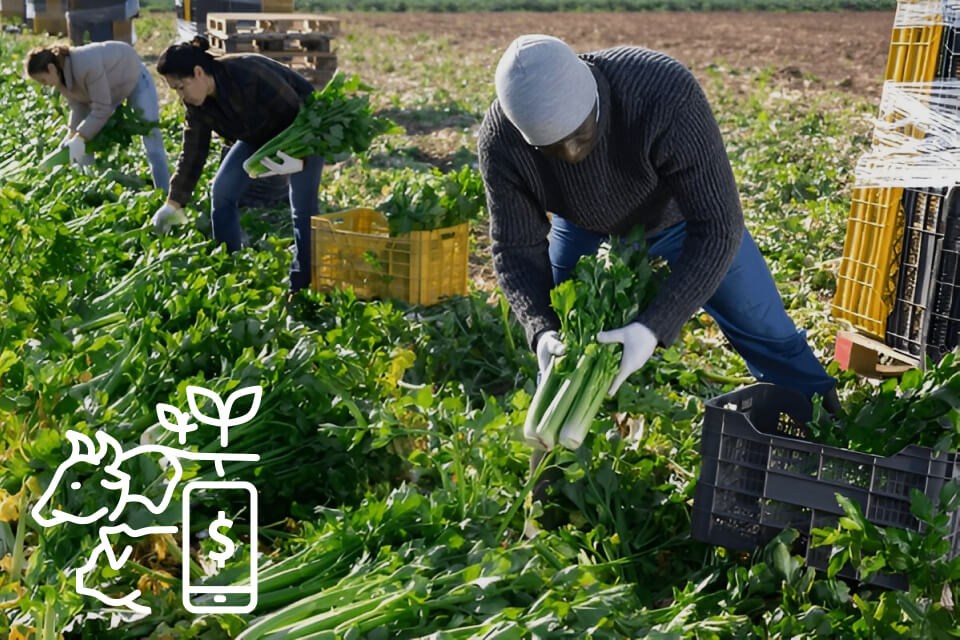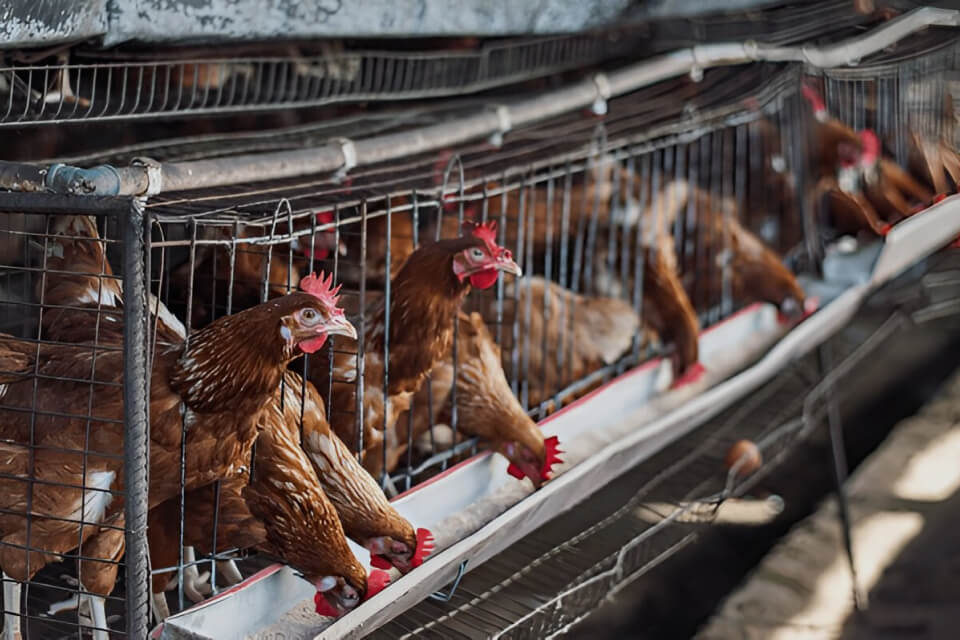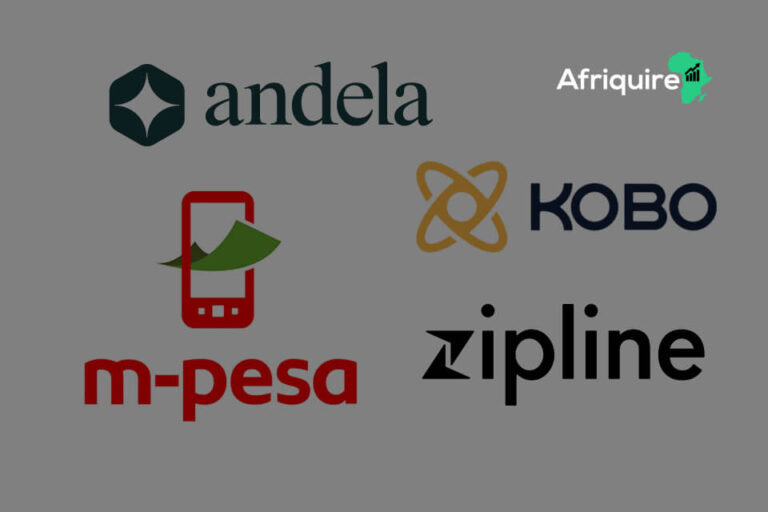- Introduction
- 3 Microfinance’s Influence on Agribusiness Growth
- Case Studies of Agribusinesses Benefiting from Microfinance
- Challenges and Solutions for Agribusinesses
- Benefits for Smallholder Farmers and Agribusinesses
- Future Prospects for Agribusiness Financing
- Frequently Asked Questions (FAQs)
- Conclusion
Introduction
The impact of microfinance on African agribusinesses is growing stronger every day. More and more small farmers and business owners are looking for ways to grow their farms and agribusinesses. Many of them cannot get loans from regular banks, so they turn to microfinance. This type of financial service gives them small loans and savings options that match their needs.
In this guide, we will look closely at how microfinance supports agribusiness growth in Africa. We will also look at real-life examples of success, the challenges that still exist, and what the future holds for agribusiness finance. As we go along, we will also touch on how microfinance is helping African social enterprises and small businesses grow.
Definition of Microfinance in an African Context
Simply put, microfinance is a way of helping people and businesses who cannot borrow money from regular banks. It gives them small loans and other financial tools like savings accounts.
In Africa, microfinance is very useful for small farmers and people living in rural areas. These groups often need money to buy seeds, farming tools, or even to start small agribusinesses.
Unlike big banks, microfinance institutions understand the needs of low-income earners. They usually ask for less strict requirements and offer smaller loan amounts. This makes it easier for farmers and agribusiness owners to get the help they need.
Importance of Agribusiness to African Economies
Agribusiness plays a big role in Africa’s economy. In many African countries, farming gives jobs to over half of the people. It also helps increase national income and keeps food available for everyone.
Agribusiness is more than just farming. It includes growing crops, processing them, selling them, and even transporting them. Because of this, agribusiness creates more jobs, improves food security, and brings growth to rural areas.
However, many people working in this sector cannot get loans from banks. This is where microfinance comes in. By giving small, easy-to-access loans and savings options, microfinance helps these businesses survive and grow.
Purpose and Scope of the Article
This article is your easy-to-follow guide to understanding how microfinance is helping agribusinesses in Africa. You will learn how small loans and financial services are supporting farmers and business owners who want to grow their work and earn more income.
We will also look at real examples of businesses that have succeeded through microfinance. You will see what challenges they faced when trying to get loans and how they overcame them. Then, we will talk about some solutions to these problems.
As you read, you will also see how microfinance is helping in other areas. For example, we will touch on how it supports African social enterprises and small businesses. These are important because they bring change and development to communities.
Finally, we will look at the future. What new tools, ideas, and policies could make microfinance even more useful? And how can more people learn how to start an agribusiness in Africa with the help of microfinance?
3 Microfinance’s Influence on Agribusiness Growth
The impact of microfinance on African agribusinesses is changing the story for many small farmers and young entrepreneurs across Africa. Thanks to microfinance, they no longer need to rely on big banks. Instead, they can access small loans, savings, and other financial tools that help them grow.
Let’s look at how microfinance is helping Africa’s farmers and small businesses do more, earn more, and dream bigger.
Access to Credit and Financial Services
Getting a loan from a traditional bank can be very hard. The process takes time, and the requirements are often too much. Most banks ask for land papers or large amounts of money as security. This makes it hard for small farmers or beginners to get help.
But microfinance changes that. It gives small loans to people who need it the most. This includes young people, women, and those living in rural areas. Even if you don’t own land, you can still get support to start your business or grow your farm.
More importantly, it gives people the courage to take a step forward. When they have access to financial tools like savings, loans, and insurance, they can plan better. So, more people are learning how to start an agribusiness in Africa and are finally able to take control of their future.
Improved Cash Flow and Investment Capacity
Every business needs money to run smoothly. Without it, farmers can’t buy seeds, fertiliser, or hire help. This is where microfinance plays a key role. With access to small, flexible loans, agribusiness owners can keep their business running.
They can plan for the planting season, respond quickly to market changes, and invest in tools that make their work easier. When the money is there at the right time, they avoid delays and losses. This helps them grow faster and reduce risks.
Over time, they also learn how to manage their money, save for the future, and make smart business decisions. This is not just good for them, but also for their workers and the local economy. In this way, the impact of microfinance on African agribusinesses continues to grow.
Expansion of Farm Operations and Agribusinesses
Once farmers and small business owners get regular support, they begin to dream bigger. With a steady flow of money, they can rent more land, try new ideas, or hire more workers. This helps them increase production and reach more customers.
Even better, they can team up with other farmers in groups called cooperatives. Together, they can buy items in bulk, share equipment, or sell to bigger markets. This brings in more profit and strengthens the entire farming community.
Also, by expanding their agribusiness, they create jobs and boost food supply. This is one of the best ways to reduce hunger and unemployment. And it shows how microfinance continues to support African small businesses in real ways.
Role of Microfinance Institutions (MFIs) and Cooperatives
Microfinance institutions and cooperatives are doing important work behind the scenes. They don’t just give loans. They also teach people how to manage money, run a business, and save for the future.
These organisations understand that farmers face many challenges, like changes in weather or sudden price drops. So, they create services that match the real-life needs of African farmers.
Cooperatives also help build trust. They give farmers a sense of community and shared support. Whether it’s getting training or accessing new markets, farmers in cooperatives are better prepared to grow their businesses.
This also shows how big the impact of microfinance on African social enterprises can be. It’s not just about money. It’s about knowledge, teamwork, and building a better future for everyone.

Case Studies of Agribusinesses Benefiting from Microfinance
The impact of microfinance on African agribusinesses is clear. It gives hope to small business owners who don’t have access to banks or big investors. With small loans and support, people can grow their farms, build their businesses, and create jobs for others.
Below are three real-life stories from across Africa that show how microfinance is changing lives and lifting up entire communities. If you’re thinking about how to start an agribusiness in Africa, these stories will inspire you.
Poultry Farming in Nigeria Supported by Microloans
In many parts of Nigeria, small poultry farmers struggle to buy baby chicks, feed, and medicine. Most banks won’t give them loans. But microfinance has become a game-changer.
For example, a group of women in Yewa division of Ogun State received small loans from a local microfinance bank. With the money, they bought more chicks, improved their chicken houses, and purchased feed in large quantities to save money.
As time went on, they were able to sell more eggs and chickens. This helped them earn more money every week. With the extra income, they improved their homes and sent more of their children to school.
This shows how microfinance for African small businesses can help people grow strong businesses even when traditional banks say no.
Cassava Processing Enterprise in Ghana with Group Lending
In Ghana, microfinance often works through group lending. This means people come together to borrow as a team and help each other succeed.
For example, a women’s cooperative can come together to apply for a group loan from a local microfinance company. With the money, they can buy better machines to turn cassava into products like garri and starch. Group lending will also help to build safer storage spaces.
As a result, they can make more food and sell it to larger markets in cities like Accra. They can also earn more profit and use the extra money to grow other parts of their farming business.
Because everyone is responsible for the loan, they work hard to pay it back. This story shows how the impact of microfinance on African social enterprises can be powerful, especially when people work together.
Youth-led Agritech Startup in Kenya Funded by Microfinance
Many young people in Africa have great business ideas. But they don’t always have the money to start. That’s where microfinance can help.
In Nairobi, a group of university students built a mobile app to help small farmers. The app gave crop advice and made it easier to buy farming tools. But investors said the idea was too risky.
Then, a youth-focused microfinance bank stepped in. It gave the team a loan to launch the app, pay staff, and spread the word. Soon, the startup was working with farming groups and reaching thousands of farmers.
Because the loan had flexible repayment terms, the team could focus on building their product without worrying too much about early profits. This is one way microfinance for African small businesses is supporting new ideas and bringing digital change to farming.
Lessons Learned from each Case
Each of these stories has important lessons that show the power of microfinance:
- Microfinance gives people a fair chance. Whether it’s women in Nigeria or young entrepreneurs in Kenya, these loans help people who banks often ignore.
- Group loans build trust and teamwork. In Ghana, group lending helped women grow their business together and stay committed to repaying.
- Flexible loans support new ideas. Many small businesses start with just an idea. Microfinance gives them room to grow slowly and safely.
- Stronger businesses build stronger communities. Microfinance helps more than individuals. It supports entire communities and creates more jobs.
Young leaders are getting support. Microfinance is now helping the next generation use technology to improve farming and business in Africa.
Challenges and Solutions for Agribusinesses
Microfinance is helping farmers and small businesses grow across Africa. But even though it’s helpful, there are still many problems. These issues affect how well microfinance works for farmers and agribusinesses. Let’s look at these problems and also see the new ways people are solving them.
Limited Loan Amounts and Short Repayment Periods
One big challenge is that the loans from microfinance organisations are often too small. Many times, these loans also need to be paid back too quickly.
This is hard for farmers because farming takes time. For example, after planting crops, farmers must wait months before they can sell their harvest and make money. If they are asked to repay the loan before selling their crops, it becomes a big problem.
So, when loans are small and repayment times are short, it adds pressure. Many farmers may even avoid borrowing because of this. This clearly affects the overall impact of microfinance on African agribusinesses.
Lack of Financial Literacy among Small-scale Farmers
Another issue is that many small farmers don’t know enough about managing money. They might not know how to plan, budget, or use the loan wisely.
This makes it harder for them to grow their businesses or repay loans on time. Without good money skills, they can easily fall into debt. So, they may struggle even with the support of microfinance.
That’s why teaching financial skills is very important. Once farmers understand how to use money well, they can do better with loans and make their agribusinesses stronger.
Weather and Climate-related Risks
Farming depends a lot on good weather. But in many places, the weather is changing. There can be too much rain, too little rain, or even floods.
These problems can destroy crops and reduce harvests. When that happens, farmers lose income and cannot repay loans.
This makes lenders afraid to give out more loans. It also means fewer farmers can access microfinance when they need it most. That is a big reason why the impact of microfinance on African small businesses can be limited by climate challenges.
Solutions: Insurance, Digital Tools, Training, and Loan Restructuring
Thankfully, many helpful solutions are now being used to support farmers.
One solution is insurance. There are new kinds of insurance made just for farmers. These protect them when floods or droughts destroy their crops. This way, they don’t lose everything and can still repay their loans.
Another helpful tool is digital finance. Mobile banking and apps are making it easier for farmers to borrow money, send payments, and track how they spend. This saves time and makes things more organised.
Training programs are also changing things. They teach farmers how to plan, budget and grow their business. When farmers understand how to use loans properly, they are more confident. They also make smarter decisions.
Some microfinance institutions are now offering flexible loan terms. They allow farmers to repay their loans after the harvest season. This matches the farming cycle and makes repayment easier.
Together, these ideas are improving the impact of microfinance on African agribusinesses and helping many grow their farms into successful businesses.

Benefits for Smallholder Farmers and Agribusinesses
Microfinance is changing the game for farmers and small businesses across Africa. It gives them access to small loans and other financial services, which helps them grow their farms and build strong businesses. Let’s look at how this support is making a big difference.
Increased Productivity and Income Levels
First of all, microfinance helps farmers work better and earn more. With small loans, they can buy good seeds, fertilisers, and farm tools right when they need them. This means they grow more crops and have better harvests.
As a result, they sell more produce and make more money. This helps them take care of their families and improve their daily lives. Over time, many farmers who were struggling begin to move out of poverty.
Job Creation and Community Development
Next, microfinance doesn’t just help one person. It also helps the whole community. When farmers and agribusiness owners grow their work, they hire more people. These jobs can be in planting, harvesting, processing, or selling food.
As more people get jobs, the community becomes stronger. More families can earn income, children can go to school, and the area becomes more attractive for new businesses and support. Microfinance helps build these better communities.
Access to Better Equipment and Improved Technology
Also, with the help of microfinance, farmers can now buy or rent better tools. This includes things like tractors, irrigation systems, and better storage for their crops. Before, they had to do most things by hand. Now, they can work faster and produce more.
Even better, modern tools help reduce waste. For example, they can store crops properly and lose less after harvest. With the right technology, farms grow bigger and better.
Strengthened Supply Chains and Market Access
Furthermore, microfinance makes it easier for agribusinesses to reach more markets. With money to spend, they can transport goods, package them nicely, and advertise their products.
This means farmers and business owners can sell in big cities or even to other countries. They get better prices, waste less, and make more profit. As supply chains become stronger, everyone benefits, from the farmer to the final buyer.
Future Prospects for Agribusiness Financing
The impact of microfinance on African agribusinesses is becoming stronger every day. With new tools, better technology, and more partnerships, the future of agribusiness financing in Africa looks very bright. Let’s look at some big changes that will shape how farmers and agripreneurs grow their businesses in the years to come.
Integration of Fintech and Mobile Banking in Rural Finance
First of all, let’s talk about technology. More farmers in rural areas now use mobile phones. That means they can access banking services even if there is no bank nearby.
With mobile banking, they can save money, send payments, and receive loans without travelling far. Some fintech companies even use information from phone usage or farm data to decide who can get credit. This is very helpful for farmers who don’t have official records.
Thanks to these changes, more small farmers and rural agribusinesses can now get support. This is a big step forward in microfinance for African small businesses.
Policy Support and Government Incentives
Next, governments across Africa are stepping up. Many now understand how important farming is for their economy. So, they are making rules and programs to help.
Some offer tax breaks to microfinance providers. Others give loans with low interest or help farmers pay less for seeds and equipment. These actions make it easier for microfinance groups to lend money to farmers.
When governments give support like this, it helps more people succeed in agriculture. This also supports the growing impact of microfinance on African agribusinesses.
Blended Finance and Public-Private Partnerships
Another powerful idea is blended finance. This means putting together money from the government, donors, and private companies to support farmers and agribusiness owners.
For example, a government might agree to cover part of a loan if the farmer cannot pay. That gives microfinance companies more confidence to help people who might otherwise be seen as too risky.
These partnerships make loans cheaper and easier to get. And when that happens, both farmers and African social enterprises can grow faster and do more.
Scaling Up Microfinance Impact across Regions
Finally, all these efforts are helping microfinance for African small businesses grow in every region. Whether it’s in West Africa, East Africa, or Southern Africa, the lessons learned in one place are helping others.
As more farmers get credit, they can buy seeds, tools, and fertiliser. They can also improve their harvests and even start small food processing businesses. This growth creates jobs, boosts the local economy, and supports families.
When microfinance spreads across more parts of the continent, it can help lift more people out of poverty. That’s why the future looks hopeful.

Frequently Asked Questions (FAQs)
1. What is the impact of microfinance on African agribusiness growth?
Microfinance provides small loans and financial services that help agribusinesses buy inputs, expand operations, and increase productivity, leading to growth in the sector.
2. What are the main challenges agribusinesses face when accessing microfinance?
Challenges include high interest rates, short repayment periods, lack of collateral, and limited financial literacy among farmers.
3. How can these challenges be addressed?
Solutions involve government policy support, improving financial literacy, simplifying loan procedures, and offering flexible repayment plans.
4. Does microfinance support social enterprises in African agriculture?
Yes, microfinance enables social enterprises to grow by providing loans that help them create jobs and improve community welfare.
5. What is the future outlook for agribusiness financing through microfinance?
With growing digital platforms and more tailored products, microfinance is expected to expand, offering more farmers easier and flexible access to funds.
Conclusion
The impact of microfinance on African agribusinesses is clear and significant. It gives small farmers and business owners the money they need to grow, try new ideas, and improve food supply. Despite challenges such as high costs and limited access, ongoing improvements in policy, education, and technology are making microfinance more effective and accessible.
Furthermore, microfinance plays a vital role in the success of African social enterprises. It helps fund smart business ideas that improve lives and create jobs. Looking ahead, we need more flexible and fair financial products so that African agribusinesses can keep growing strong.
Microfinance is not just a tool. It is a lifeline for Africa’s farming future.



